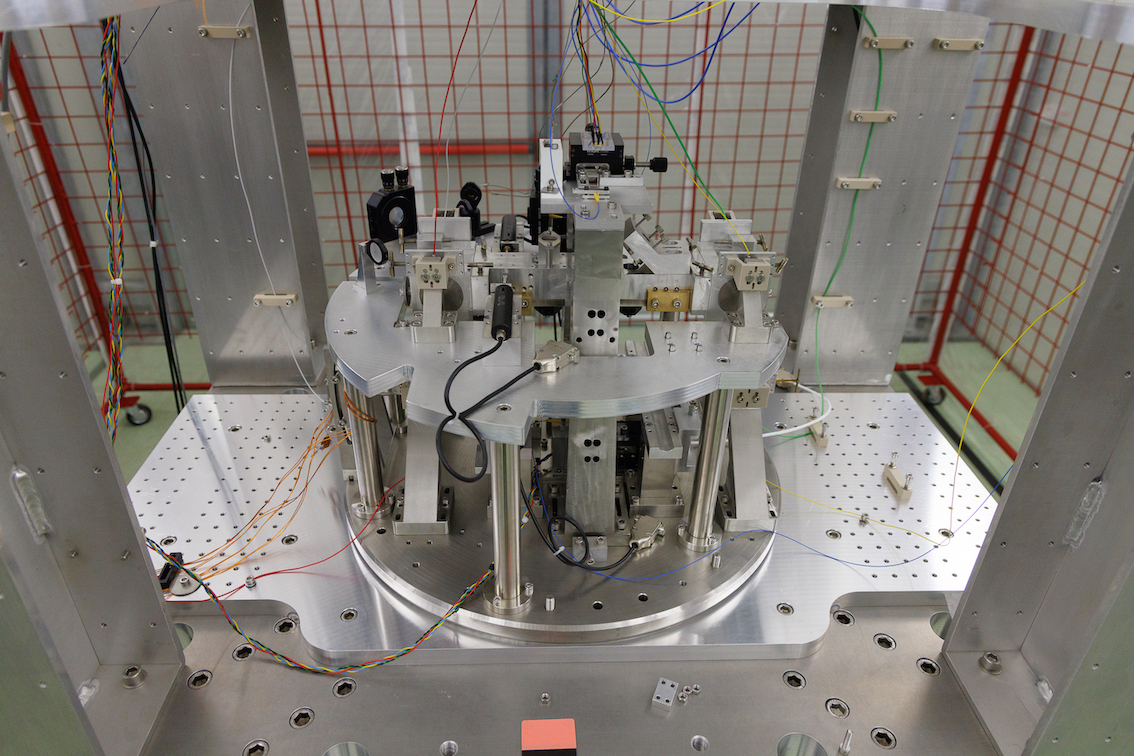
Waiting for the Einstein Telescope, experiments able to achieve interesting scientific results are already underway in the area of the former Sos Enattos mine, in Sardinia. This is shown by a study led by Enrico Calloni of the University of Naples “Federico II” and the Naples section of INFN, recently published in the journal “The European Physical Journal Plus” (EPJ Plus), which has included it in its highlights. The work presents the first results of the Archimedes experiment, ongoing at the SAR-GRAV laboratory in Sos Enattos, which aims to measure the interaction between electromagnetic vacuum fluctuations and the gravitational field: in particular, the research group has built a prototype balance with a sensitivity in the frequency range between 20 and 100 millihertz, compatible with thermal noise. Achieving this sensitivity demonstrates the reliability of the optical and mechanical design of the prototype balance and also paves the way for the search for so-called ultra-light dark photons of type B-L, candidates to constitute dark matter.
The scientific goals of the Archimedes experiment revolve around the concept of “vacuum”, which in the context of quantum mechanics is actually anything but empty (at least in the usual meaning associated with this term): quantum vacuum is indeed endowed with its own energy, different from zero, and is characterized by incessant fluctuations, due to the continuous creation and destruction of particles and antiparticles. Such fluctuations can, at least in theory, produce interactions with macroscopic objects: Archimedes, in particular, aims to observe the possible interactions of quantum vacuum with the gravitational field, and therefore its influence on the weight of bodies. To achieve this, it must operate under conditions of absolute seismic and anthropic silence, requirements guaranteed by the Sos Enattos site (which for the same reasons is considered ideal also for hosting the Einstein Telescope, future gravitational wave observatory).
The prototype balance used so far operates at room temperature: it has an aluminum arm of 50 centimeters and supports an aluminum sample of 200 grams, with a lead counterweight. A first brief measurement session, whose results are reported in the article published in EPJ Plus, has already been sufficient to certify the efficiency and sensitivity of the prototype, paving the way for the completion of the actual Archimedes balance. The latter will be cryogenic and will be able to achieve a sensitivity about 10 times higher than the prototype, both thanks to the low temperature and due to an improvement in the quality factor of the suspension, currently under study. But these preliminary results also open up other interesting scenarios, particularly related to the search for dark matter, the mysterious form of matter that constitutes about 86 percent of the mass of the whole universe, whose nature is still unknown.
Among the many proposed candidates for dark matter is also the dark photon, a sort of counterpart of the electromagnetic photon that would act as a mediator between the world of ordinary matter and the “dark sector”, composed precisely of hypothetical dark matter particles. In turn, several kinds of dark photons with variable physical characteristics have been theorized.
“Among the various candidates is the so-called dark photon B-L: an ultralight massive vector boson sensitive to the B-L quantum number B-L, B being the baryonic number and L the leptonic number”, explains Luigi Rosa, theoretical physicist at the University “Federico II” and INFN Naples. “Instruments for measuring small forces have proved to be among the best in the search for ultralight dark photons”.
And this is where Archimedes comes into play: the sensitivity achieved by the experiment is already such that it can investigate the existence of this type of dark photon, or at least impose more stringent constraints on the allowed values of its mass. “The Archimedes experiment, in its progress towards the measurement of the interaction of vacuum and gravity fluctuations, achieves an interesting intermediate result: realizing the first thermal noise-limited balance in the 20-100 millihertz band, opening the way to the search for the B-L dark photon, in the mass range between 10-16 e 10-15 electronvolts”, says Enrico Calloni. “In just one night of data taking, Archimedes reached limits compatible with current world best scientific constraints; with data collection of a few months would already be able to reach an entirely unexplored detection region”.
The Archimedes collaboration, led by the National Institute for Nuclear Physics, includes the University “Federico II”, Sapienza University of Rome, the University of Sassari, the University of Cagliari, the European Gravitational Observatory (EGO), the National Institute of Optics of CNR (CNR-INO), and the Center for Theoretical Physics of the University of Marseille (France). The SAR-GRAV laboratory was established under a program agreement between INFN, the Sardinia Region, the National Institute of Geophysics and Volcanology (INGV), the University of Sassari, the University of Cagliari, and IGEA spa (the company that manages the decommissioned Sos Enattos mine), and is funded by the Sardinia Region.






